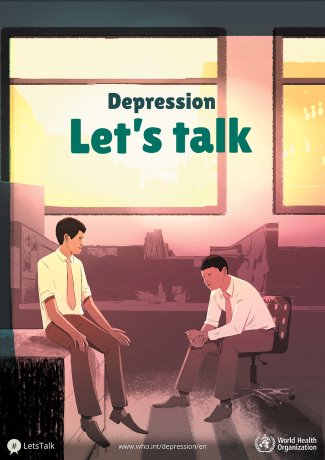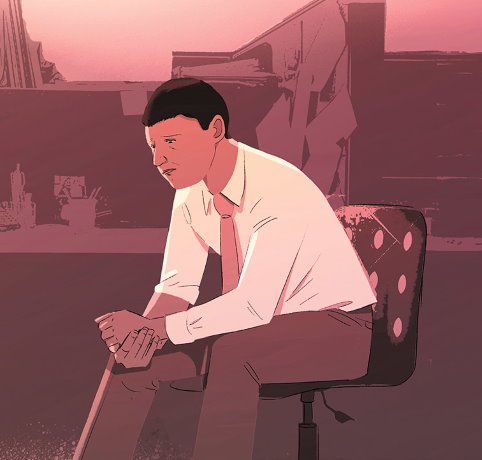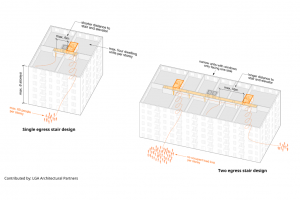Construction is a tough line of work. Not only is it physically demanding, it is emotionally exacting, too. And sometimes the body or the spirit gets damaged. Or even crushed.
Although physical injuries in workplace are relatively easy to identify, what does a psychological injury look like?
Any competent safety officer knows the difference between a bruise and a fracture, but how do you differentiate hurt feelings from chronic anxiety?
"The construction industry doesn’t yet understand psychological injuries in the workplace, or their seriousness or prevalence," said Dave Earle, vice-president of government relations and human resources services at Construction Labour Relations Association of BC.
Earle says it is only recently the industry has recognized the existence of workplace mental health or the lack thereof.
"Construction is more focused on physical injuries," he said. "They’re easier to identify, assess and manage."
Vancouver health and safety consultant Jeff Lyth says two kinds of mental health in the workplace need to be recognized and considered.
"One is individual mental health that is largely independent of the workplace and anything that might be going on there," he said. "They’re the sorts of head troubles anyone can bring from home to work."
The second kind of mental health is related to interactions with people at work.
"Interpersonal communication, rather than an individual’s hurt feelings, is at the centre of what makes a psychologically safe workplace," Lyth said.
An organization’s safety culture is affected not only by foul language or bullying and harassment on the job site.
"It’s also impacted by how good their leaders are at hearing bad news, keeping a cool head and figuring out how to handle it," Lyth said. "Workers need to be able to feel safe to report anything to their leaders without negative consequences. Not all of them do feel confident, unfortunately."
This lack of trust can have grave and even disastrous consequences.
"It can have a stifling effect on on-the-job reporting and communication and that can lead to some very serious incidents," Lyth said.
Leslee Montgomery, an on-site health and safety advisor in New Westminster, B.C., says the connection between mental health and workplace safety is a two-way street.
"If someone is experiencing depression or anxiety, or has developed unhealthy coping mechanisms, it means their mind is not where it needs to be," said Montgomery. "This is when people get hurt. It also leads us to a whole other field of mental health in our industry, which is the psychological impact of being injured."
Because mental health in the construction industry still has an "ugly stigma" attached to it, many people don’t know how to address it.
"Older workers, especially, are uncomfortable talking about their feelings, particularly negative feelings," Montgomery said. "They think the sky will fall if they start to open up."
Worker attitudes regarding mental health are starting to change, however.
"Different generations have different expectations today," she said. "Younger men in the industry are starting to realize they have a right to work on a safe and sane work site. At the same time, there’s still a fear of being the first one to step up and say something."
Montgomery says the construction industry has been built on negative motivation without fully understanding the mental ramifications.
"Many people believe communication must be loud, abrasive and full of profanity if they want to get their point across," she said. "It boggles my mind that so many individuals find this acceptable just because this is the way it has always been done."
Other things besides attitudes are changing, too.
In 2012, the Government of British Columbia passed Bill 14, which addressed revisions to the Workers Compensation Act as they relate to compensation for mental disorders.
The amended legislation applies to decisions made by WorkSafeBC and the Workers’ Compensation Appeal Tribunal on or after July 1, 2012.
After that date, all accepted claims, whether they are related to physical or mental injuries, are treated equally.
WorkSafeBC provides benefits for mental health disorders related to employment, although not all mental health disorders qualify for benefits.
Some kinds of workplace mental health problems can be dealt with effectively by the sufferers themselves. Vancouver consultant and facilitator Jo-Ann Panneton offers leadership and training programs based on a 2,500-year-old concept of mindfulness.
"Mindfulness is the systematic training of attention," said Panneton. "It teaches us how to manage day-to-day stress by focusing on just one thing at a time. Think of it as a healthy antidote to multi-tasking."

The World Health Organization has a multimedia campaign which raises awareness about mental health issues in various scenarios, such as the workplace in the poster above.
Photo: World Health Organization"










Recent Comments
comments for this post are closed